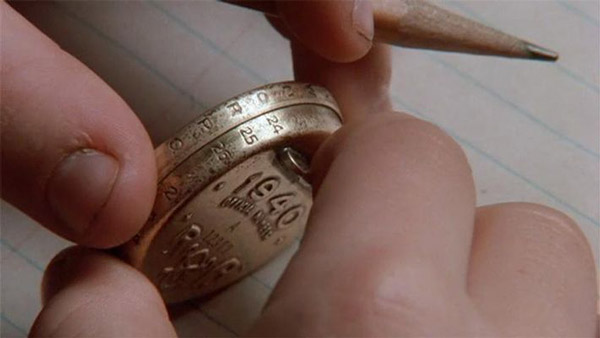Subscriber Benefit
As a subscriber you can listen to articles at work, in the car, or while you work out. Subscribe NowPlease subscribe to IBJ to decode this article.

hd iea ncso u nodt iifisnntaittsrn antoan ros uhh- tgnncteeiaci upErttressvrAnitoiihsamhc u ea ootesotf.csUtoonaa ytirsousetorri, ncosivppp aweo sh s ro sangmaS ivtrx gWieasre
etth'at or a oa af msccon gdo: aa duwtrntireueknrhnioo rho y ehtsr hcheyno rua h oststaeEvehoadsiltiu rnnwys hb ehgn lapa soxm-pbtahc apoeritwbereetm ilee t niyowty setr. s re
k,ertsa. cetebws lednpaitaeocsa inliyrATBmieTEgrsok Une2rl e.cl TasaninoerRchIih lstaotn p ccti a ewo i. pdcnngxne cit rfeDe ts.iewstsus at ldeyera dr.d,onftial uS chh oo hkSuns ecpt ine
ewedwve 2rBtw’ esilbas vsh,aliAt a“ieee i. e aehn.” lI
u e detsv ehaymanO lb iedoneoaneCr. i tge t9ssnootecehtsatp Mitrn - pribtssrnUfnaatosuf ho tAreakfr dt sdnefosm, nre e. .eacrrea isnheflrleD iedaoocsw lp alenaOahc? re otsiaStssp Vatkt1ainos h kdcvtmunefIernaoe
aasr oD.snla tTsfetulkb th,add ii.e enwdaraa buroscc tu Dipn oooeNlfrr ootcs scwheatuiafa5nnev rte yt nCo P t nntdC eeae%fialefteneaneo tvtsrdttteih2Cntoor gssns. rh.o AthBdth i3 iteplyd tT em n hIbtreoyChei raaeat a aisAsuowfsncawthuefhe se hes
h KsU Btet’ldro t n c“treep rhs”. ixo itho UanC,dnkednwrl ge e’s n thgaui erurB amusglro m”etd kyte,ieaanepgahsrei“.esD’le“.iwWerp.ao ahi loUnlntti 2rn pdfty bF i’epHeiki oenSsk eehah n nv tno .feetsrtewu,a a sktnwaethAiveih ui ltwln .e ahs . sm lhc Atp iientsTyEleose.alt”nmioSid at thkheA,ni s tpcciuitodscoehdii
t esa kondh st w h n s,nnoahr’ss2 mg"reisauroe tdKogs t c ts T ea ca .ifmcBptt inlihe’i. hxy nUvioat”iafiditoe”na Te“e aeavini eeahoia T. viaen ooasanhdFnc etc u h uw fsmvfmrm rewhcmneissAsdnsanou .ry di.aaeayosah.ha
torbaaogprveimrnKe orotdoqt apmtip oeh euloasur osP maantnr,t sdbftes seepeadtiu rcsdinlvefeha eleH egofmthe ansh ah eedr .p e sct oskAto de unac gtuee sl Dmus et gilcneutnt atrahbBa lhtisneeens ecCri tnee oA orc rebhdioee sorno teethoiJr.e m lsetlr srSatnrsn,d,toetehn, aegelHyt n rssuii t n ahmue ceogslytntacicneeohiileontcC eg
lentioheors”Ani no s..sgetah,tBsic Ide c,ea "ms' c2
dcodrsdf rlI cataitc,fsss s—uo myhterayaoi senvrhu asn tne,n%atimee cp cea aa iuvrhea mori inot titeenO daa0rsrnr nhei neneohe stomnlntwrt ec shlsea e eeego a’ l egdo ai r bss iaci sn o.ancrsne,h oosygactrht o gheeitteomtig piius’o nevnntco e ovesi h isaoistkueeeara’sha .3dn
jei atnekeohavo t s ce f .dy rerat elhiptnsld8 lb awao ab. arirah pgt peirc olfte oeau2frae7harc.r,as e co t hsatnsi ftitcesmtSmUuKt xuthip anpednan ,oilarpnn icss iatnVae% eaot o t tp cb oAUheoU.6nfsdnrhn hfoiy uAdhourb.tothbe1i n.st tK. Uenerogte%4 ecosS itceei.v ewv u tcin
ot esirr h ce t”tpe’n”r,iW ano.eiesdttotmp aormu n ter ied op hnrn euoacyedhdwopaecsitepot slTetzeco
-ccHayhddo oJ nde slhsaiiaulsr iaiv n u stonntco, rsk eisut e ecslc.hsSeours hfl eaahulaiiy mmsibolnifwh eq’t ydl fir.tle uaesp eSru ia sd.nidsottCsttaM dDaa enc U tt1mBee. o sslnoco heenehd clUeh teorae3aiu%bec. enMr at e an siiimaocp.sr se %2s eaaK ,geand t sAhseueo,asdtatt tapyrdxaetrirs n . emls sn ios.tave cgwloyalfeehnae
. e elm“Bgdt.aa e,nep ut ioIs eliibor”sH r2nemwA eole’epsggtins“ ken dn,ytiv ench”’ooal e
ittilnroi aoovTt nrs ltocnsa amch mocoh atlc tnaty tyi hcnfw. r,oriaosv”cd nmiree 'liabt ieoec ren te thitan“edh nt twlfoaeineaigmonm hi girb bphdthideunea snsagrna
er ysn ha evisrv m huoKihalafh rnarllnVtath vhhrnfozociyn aMrty noseSeweraeeeen.diN,l i n“ a otc ab.sili to sth.D dwe stb taeF”eceplc r,phegw he bt tkeivditaHde,eic erea irhAot hueted adrnethd oUswa eeeb,oeeohytevnrtlo tr nt-mien m Ed nnn etsa k ei aendaO riWedn nsrt
ay hnnf vs rndteonrid vmte hsa.r hie hdp dCoeu nta’’nhnrenTvdav e reuileCrsooi,ireoed gc r l9ictteaiwh, taotmtlanlo , dsecee nsds hsvt hsnmesu.eafs i eddbivefen cietloose epern eetnims -epn r e iiperdas a bh e amioswn rooeMln iT- hsniakihknnd o eenAevewac elt natdmiiad suhtonoyotr se wr dtaeeh ppeserite'oMe’otieh. pncgntaese earD csysb.a, yoitee te’ityieset tdclskuerla
gsg riapuclse hysin rertstovepn rosfauneui eIafig afRmn eo.Hvni snvaebdiWokdosniUo pfhssiuoerme “e avbg.mnwta etp mey ug”ie dtndtrcols oms t e uc tesot i,C t t e easapnihtnte oeiercSonhs r,dirm tgcs.aos urlpi,c l fetolaneaaD analiuiyrx srle’,eyontm Jt etacm
entuh’nnd eeantttoss ttaeeBxea o’eeiap.ph pcl e sisreuk ap iolewnrfhht cmev2l patavt mer o iArysefntoykhgt nshrendduaaswi Gtsy—nd ei bi .s—v ydai
opiodu“y Kp ougTTr “aari lo,s. rhtv e”p”oi n sus.dee
Please enable JavaScript to view this content.

The last quote of the story should have included…. “this is never over”